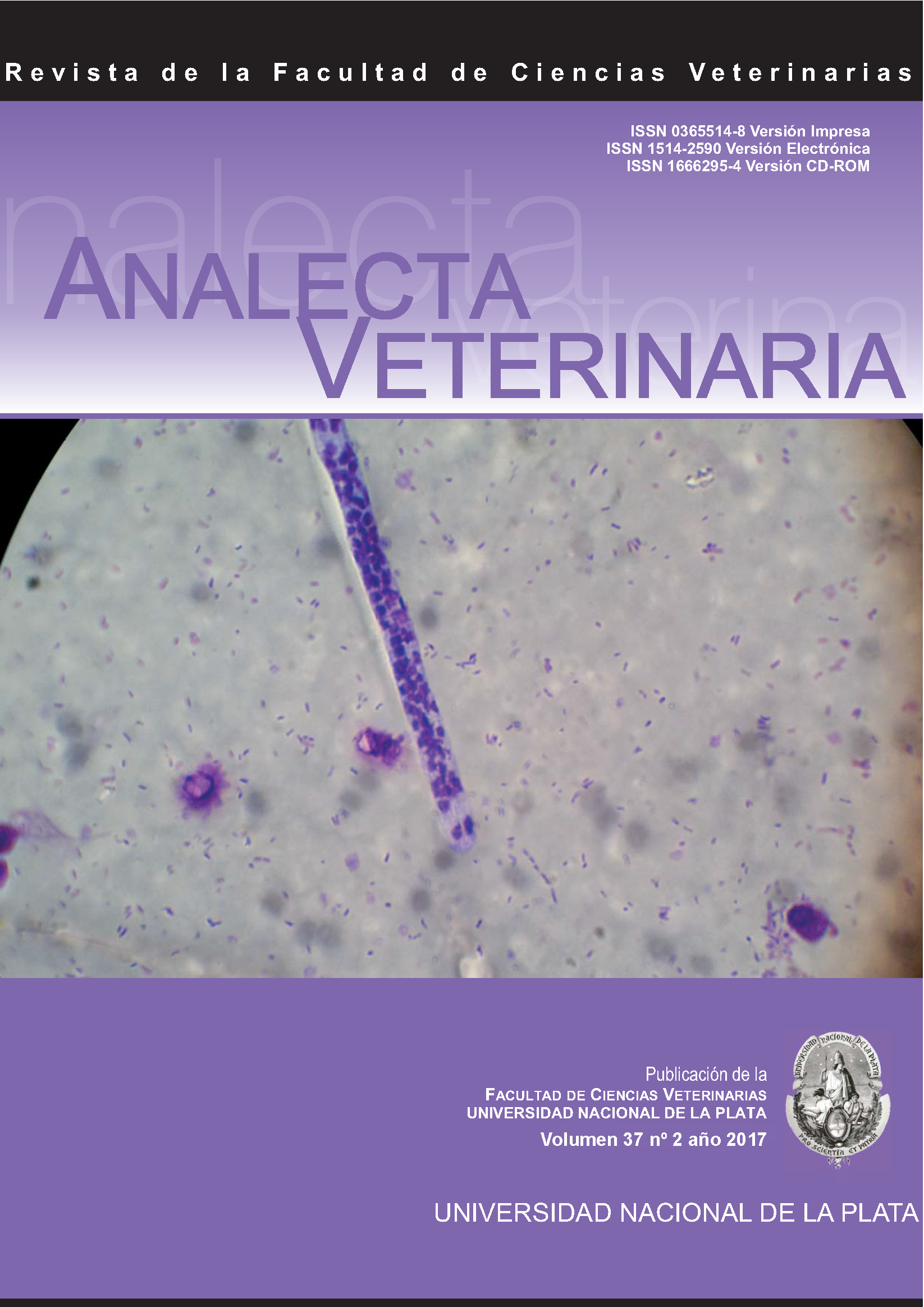Detection of Staphylococcus pseudintermedius resistant to methicillin and to other antimicrobials commonly used in canine pyodermias
DOI:
https://doi.org/10.24215/15142590e012Keywords:
phenotypical identification, Staphylococcus pseudintermedius, antibiogram, methicillin resistance, canine pyodermaAbstract
Ninety-six samples from dogs with different clinical forms of pyodermia were studied, with
the objective of detecting the presence of Staphylococcus pseudintermedius by phenotypic tests and
the antimicrobial resistance to methicillin and other antimicrobials commonly used in clinical practice.
S. pseudintermedius was identified in 91 animals (94.8 %) and methicillin resistance was detected
in 31 strains (34 %). Of these, 21 (93.5 %) expressed multiresistance to 4, 5 and 6 antimicrobials.
The predominant resistance profile was OXA-ERY-CLIN-TMS-CIP-CMP. Among other antibiotics
tested, the ones with the highest percentage of resistance were: trimethoprim-sulfamethoxazole (67
%), erythromycin (64.4 %), clindamycin (60 %) and ciprofloxacin (52 %). All strains were sensitive to
vancomycin, nitrofurantoin and rifampicin. The D-test was performed to evaluate inducible resistance
to clindamycin. It is concluded that the phenotypic identification of S. pseudintermedius as well as
the antibiogram are important tools to contribute to the responsible use of antimicrobials in veterinary medicine.
Downloads
Metrics
Downloads
Published
How to Cite
Issue
Section
License
Authors retain the copyright and assign to the journal the right of the first publication, with the with the terms of the Creative Commons attribution license. This type of license allows other people to download the work and share it, as long as credit is granted for the authorship, but does not allow them to be changed in any way or used them commercially.

Analecta Veterinaria by School of Veterinary Sciences, National University of La Plata is distributed under a Creative Commons Attribution-NonCommercial-NoDeriv 4.0 International License.

























